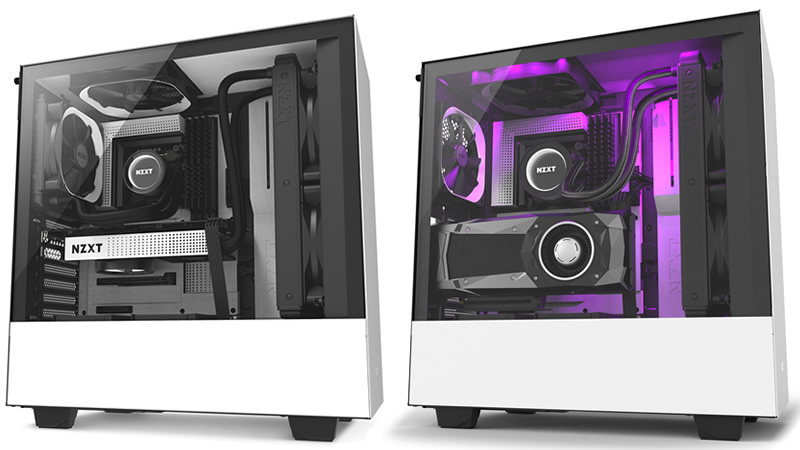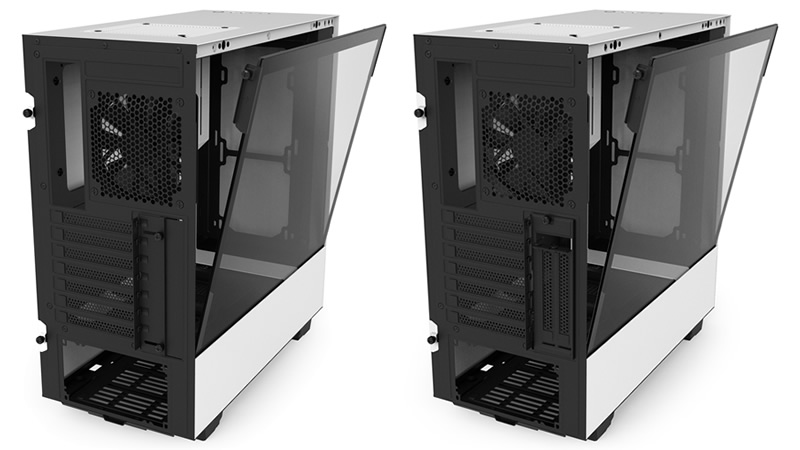NZXT H500 and H500i Review
H500 VS H500i – What’s the difference?Â
For the most part, the H500 and H500i are identical, shipping with the same basic internal layouts, construction, colour options and build quality, with the primary differences being due to some of the cases’ more advanced features.Â
To start off, the I in the H500i stands for “intelligent”, signifying the case’s use of smart features, integrating a combined HUE+ and GRID+ controller into the chassis alongside a noise sensor that can be used to develop an optimised cooling profile based on noise output levels.Â
The H500i will also ship with two integrated HUE+ RGB LED strips, offering users built-in illumination, removing the need to purchase an install your own lighting kit. The downside here is that this restricts users to NZXT’s HUE+ ecosystem, though this is only a downside if you’d prefer to run a more custom lighting setup.Â
Moving to the rear of the chassis, we can see another difference between the H500 and H500i, with the i-series model shipping with a vertical GPU mount. This addition allows users to mount their graphics card in a window-facing configuration if they purchase a compatible PCIe riser card.Â
To be honest, we would have liked to see this feature on the standard H500, though we can see why NZXT wants to differentiate their high-end model in such a way. The problem here is that vertical GPU fans will need to purchase NZXT’s H500i regardless of whether or not they want to use the case’s smart features. Â
At the rear of the enclosures, we can see that the H500 has a gap where the H500i’s HUE+/GRID+ system is mounted, leaving H500 users with some additional room behind the motherboard tray.Â
The H500i’s integrated NZXT smart hub will offer users HUE+ and GRID+ functionality using NZXT’s CAM software, which will allow users to control up to three fan channels, up to four HUE+ LED strips or 5 Aer RGB fans. The unit also includes a built-in noise sensor for use with NZXT’s Adaptive Noise Reduction technology.
In these images, we can also see NZXT’s 3.5-inch drive bays, which come in the form of a removable case that lacks toolless slider mounts and can mount up to three total HDDs. The two 2.5-inch SSD mounts can also be moved from on top of the PSU shroud to behind the motherboard tray depending on the user’s preference.  Â
   Â
 Â




